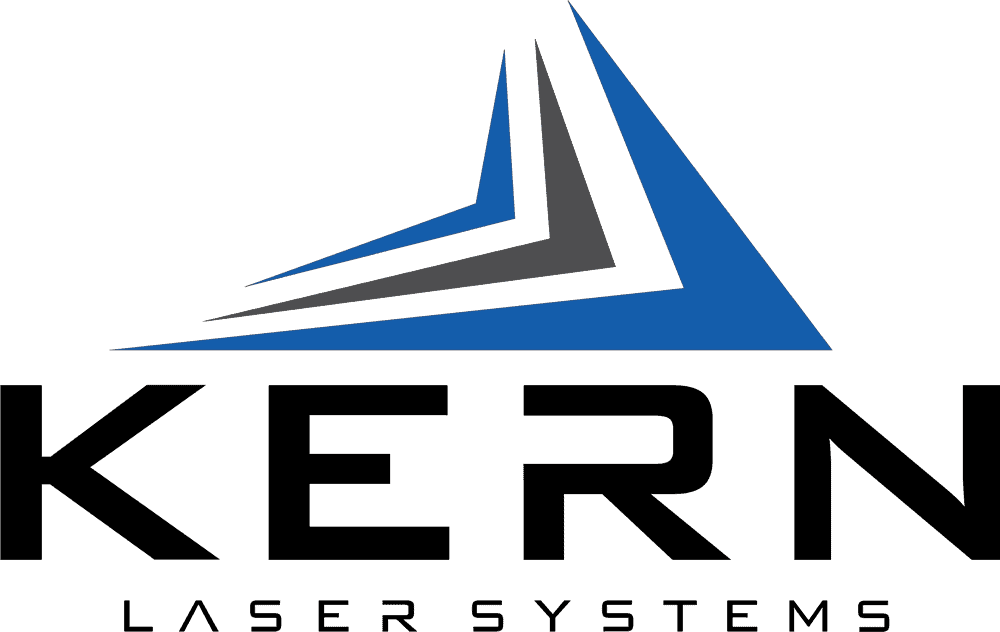Common CO₂ Laser Maintenance Mistakes
(and How to Avoid Them)
Regular maintenance of your CO₂ Kern Laser System is crucial to ensuring its longevity, performance, and efficiency. Unfortunately, some common mistakes in laser maintenance can lead to expensive repairs, poor cut quality, and can even damage your equipment. In this blog, we’ll highlight some of the more usual maintenance errors and how to avoid them to keep your Kern Laser System running at its best.

Dirty Lenses or Mirrors
One of the most common reasons for poor laser performance is dirty lenses or mirrors. If you find yourself constantly increasing power to cut through standard materials, it might be time to inspect your laser optics. Over time, dust, debris, and residue can accumulate on mirrors and lenses, leading to less laser power and lackluster cut quality.
How to Avoid This Mistake
Regular inspection and cleaning of your lenses and mirrors will ensure optimal laser performance. Use appropriate cleaning supplies, such as lint-free cloths and non-abrasive cleaning solutions, such as 99% isopropyl alcohol and acetone. Keeping your optics clean will not only maintain top tier cuts but will also prevent long-term damage, saving you replacement costs. Laser cleaning kits are available for purchase at laserlocker.com. These kits include everything you need to keep your optics clean and ready for use.

Poor Assist Air and Purge Air Quality
Contaminated purge air is another common issue that can wreak havoc on your laser systems optics. Moisture and oil are two contaminants that are often found if regular filter maintenance is not performed. In extreme cases, poor purge air quality can shorten the life of your laser source.
How to Avoid This Mistake
A properly sized compressor, dryer and filter package are key elements to providing clean, dry air (CDA). Kern’s support team is happy to suggest a proper air filtration system for your facility. Additionally, a local air specialist can provide a professional filter setup. Kern offers an after-market purge filter assembly to act as a last line of defense for your air system. By providing proper purge air quality, you’ll prevent contamination and safeguard your Kern Laser System investment. For additional information on purge gas systems, visit: Purge Gas 101
Debris Buildup in Bed and Vacuum Chamber
Debris buildup in your laser’s bed and vacuum chamber is another common maintenance mistake. Over time, material residue and waste can accumulate in the vacuum bed and ductwork, leading to poor vacuum performance and will even pose as a potential fire hazard.
How to Avoid This Mistake:
Clean your vacuum bed and ductwork regularly to remove any debris or buildup. A shop-vac can be used to remove the larger debris from the cutting bed, while a cleaning solution can be used to remove the burnt residue or any excess melted materials. This will help maintain proper fume removal and down draft table suction, which ultimately will improve the efficiency of the cutting process and reduce the risk of fire. Don’t neglect this important step in your regular maintenance routine.
Worn-Out Cutting Beds: Honeycomb, Cutting Slats, and Gridwork
The bed is crucial for keeping materials flat during the cutting process. If your cutting bed is excessively worn out, damaged, or coated in residue, it can cause poor cut quality by preventing the material from lying flat. This can result in an unfocused laser beam and produce poor-quality cuts.
How to Avoid This Mistake:
Regularly inspect the cutting bed for signs of wear and tear. If the cutting bed cannot be cleaned, or is damaged, we suggest replacing it promptly. Proper maintenance of the honeycomb will ensure accurate cuts and a safer work environment. All cutting beds are available for purchase at laserlocker.com

Chiller Maintenance
The chiller system plays an important role in keeping your laser at optimal operating temperatures. Dirty chiller air filters can cause the chiller unit to overheat and work harder than necessary, leading to potential damage. Similarly, dirty water filters and old chiller fluid can cause improper fluid flow, which may result in overheating and reduced laser performance and lifetime.
How to Avoid This Mistake:
Regularly check and replace the chiller air filters, water filters, and chiller fluid as part of your maintenance routine. Ensure that the chiller fluid is clean and free of sediment to prevent blockages in the water lines. Keeping the chiller system in tip-top shape will help prevent overheating and ensure your laser system performs at its best.
Final Thoughts
Staying proactive with regular inspections and cleaning is important. By doing so, your Kern Laser System will continue to deliver outstanding results for years to come. If you need further guidance on maintaining your laser system, don’t hesitate to reach out to our team for support and recommendations.



